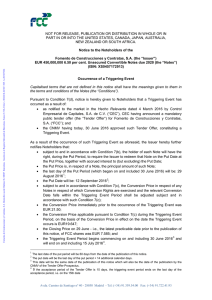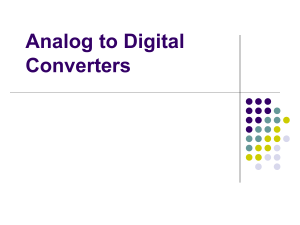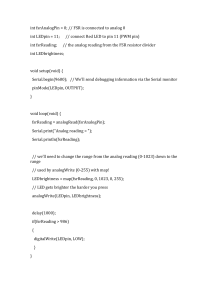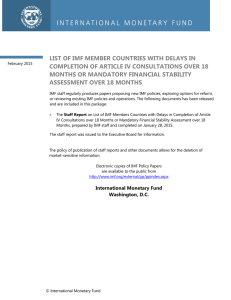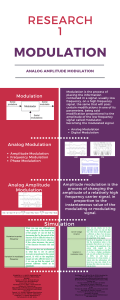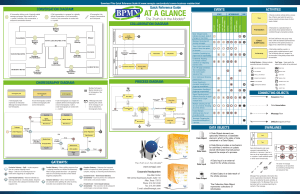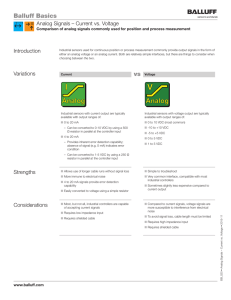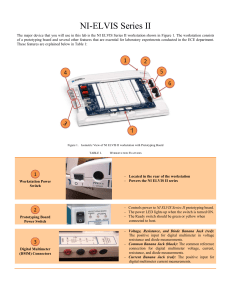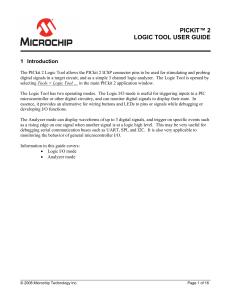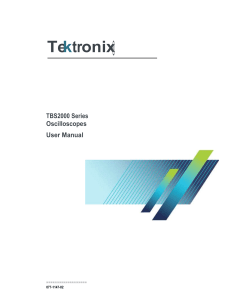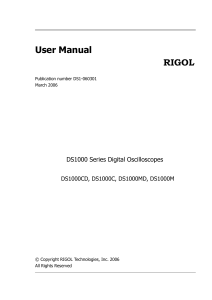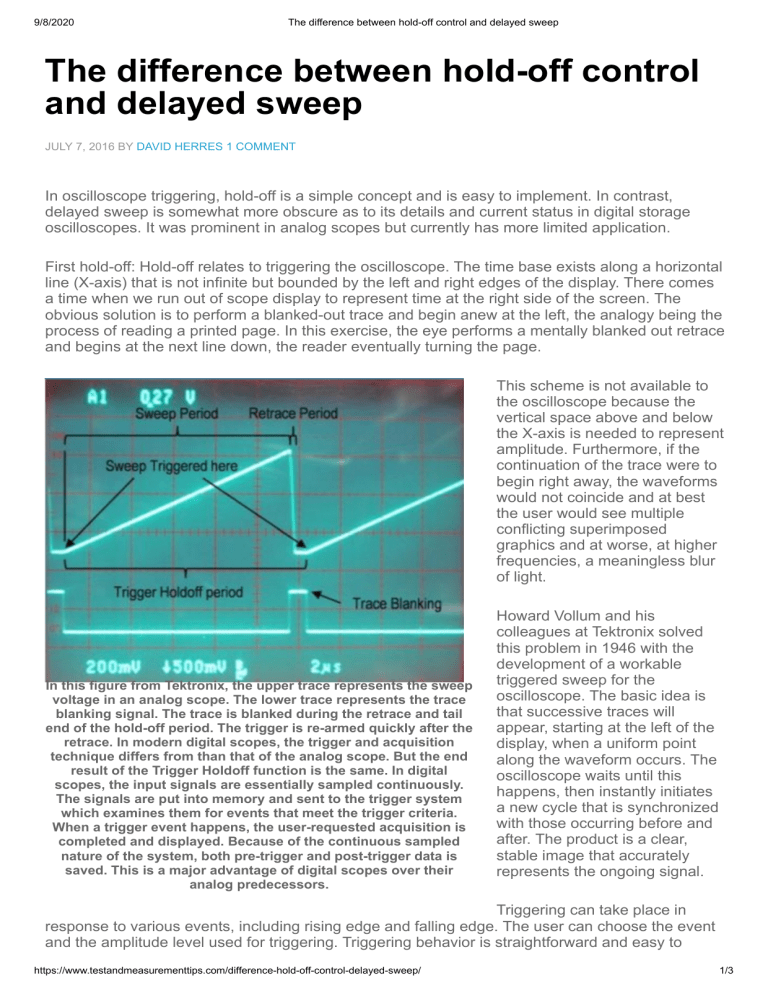
9/8/2020 The difference between hold-off control and delayed sweep The difference between hold-off control and delayed sweep JULY 7, 2016 BY DAVID HERRES 1 COMMENT In oscilloscope triggering, hold-off is a simple concept and is easy to implement. In contrast, delayed sweep is somewhat more obscure as to its details and current status in digital storage oscilloscopes. It was prominent in analog scopes but currently has more limited application. First hold-off: Hold-off relates to triggering the oscilloscope. The time base exists along a horizontal line (X-axis) that is not infinite but bounded by the left and right edges of the display. There comes a time when we run out of scope display to represent time at the right side of the screen. The obvious solution is to perform a blanked-out trace and begin anew at the left, the analogy being the process of reading a printed page. In this exercise, the eye performs a mentally blanked out retrace and begins at the next line down, the reader eventually turning the page. This scheme is not available to the oscilloscope because the vertical space above and below the X-axis is needed to represent amplitude. Furthermore, if the continuation of the trace were to begin right away, the waveforms would not coincide and at best the user would see multiple conflicting superimposed graphics and at worse, at higher frequencies, a meaningless blur of light. In this figure from Tektronix, the upper trace represents the sweep voltage in an analog scope. The lower trace represents the trace blanking signal. The trace is blanked during the retrace and tail end of the hold-off period. The trigger is re-armed quickly after the retrace. In modern digital scopes, the trigger and acquisition technique differs from than that of the analog scope. But the end result of the Trigger Holdoff function is the same. In digital scopes, the input signals are essentially sampled continuously. The signals are put into memory and sent to the trigger system which examines them for events that meet the trigger criteria. When a trigger event happens, the user-requested acquisition is completed and displayed. Because of the continuous sampled nature of the system, both pre-trigger and post-trigger data is saved. This is a major advantage of digital scopes over their analog predecessors. Howard Vollum and his colleagues at Tektronix solved this problem in 1946 with the development of a workable triggered sweep for the oscilloscope. The basic idea is that successive traces will appear, starting at the left of the display, when a uniform point along the waveform occurs. The oscilloscope waits until this happens, then instantly initiates a new cycle that is synchronized with those occurring before and after. The product is a clear, stable image that accurately represents the ongoing signal. Triggering can take place in response to various events, including rising edge and falling edge. The user can choose the event and the amplitude level used for triggering. Triggering behavior is straightforward and easy to https://www.testandmeasurementtips.com/difference-hold-off-control-delayed-sweep/ 1/3 9/8/2020 The difference between hold-off control and delayed sweep implement in most instances. But occasionally the waveform contains or acquires an anomaly that can cause false triggering. Anomalies can consist of an occasional glitch that rises high enough to initiate unwanted triggering. Another source of unintended triggering is the burst, which is a purposely introduced brief interval of intense electrical or electromagnetic activity whose purpose is to convey information while creating minimal impact on the primary signal. An example is the color burst, embedded in the video signal in TV transmission. Tektronix set up this example of a 350-μsec bursted sine wave with a 500-μsec gap between the bursts. By properly adjusting the Trigger Holdoff so the trigger rearms during the gap between the bursts, a stable nonoverlapped trace results. False triggering caused by spurious events as described above can be prevented by means of a user-implemented tool known as hold-off. The operator instructs the oscilloscope to refrain from recognizing any triggering event until a specified amount of time elapses. Assume the hold-off interval is set at 0.001 sec. It is to be emphasized that triggering does not necessarily arise upon the expiration of this amount of time. A new triggering event must also take place, so both conditions must be met. The procedure for implementing hold-off is similar in most digital scopes, but we’ll use the Rigol DS2102 oscilloscope as an example. To implement hold-off, first press Acquire. Then, in the Triggering section in the lower right area of the front panel, press Menu. At the bottom of the list of choices that appear at the right of the display, press Setting. The third item from the top in the list of categories at the right of the display is Hold-Off. The small multipurpose knob at the top center of the front panel permits adjustment of the amount (time interval) of hold-off, and the present setting is shown. This interval can be set anywhere between 100 nsec and 10 sec. In the Tektronix MDO3104, as in other Tek 3000 series oscilloscopes, the procedure to set the hold-off interval is similar. First press Default Setup and press Menu Off until all menus are cleared, just to get to a good starting place. Then, in the Trigger section next to the numeric keypad in the front panel, press Menu. In the choices that appear across the bottom of the display, press the soft key that corresponds to Hold-Off. Notice that in the menu that appears to the right of the display, the third item from the top is Hold-Off. The amount can be set by using Multipurpose Knob a with Fine disabled. (It is quicker to use the numeric keypad.) Hold-off intervals range from a minimum of 20 nsec to a maximum of 8 sec. Another important, related-but-somewhat-different, concept in oscilloscope operation is delayed sweep. This is a second, auxiliary time base that was widely used in the earlier analog oscilloscopes. It lets the user take a close look at a small selected segment of the time base of the signal under investigation. So in this respect it resembles “zoom” in contemporary digital instruments. We might want to know what this has to do with “delay”. What happens in delayed sweep relates to the existence of two separate scope time bases, which may in various formats be shown simultaneously in the display. To the primary time base is appended a user-defined delay. When the delay expires, the delayed time base is triggered. The https://www.testandmeasurementtips.com/difference-hold-off-control-delayed-sweep/ 2/3 9/8/2020 The difference between hold-off control and delayed sweep delayed time base usually incorporates a much faster sweep, creating a temporal window that typically magnifies the interval by a factor of 1,000. The oscilloscope is capable of showing the main time base only, the delayed time base only, or both simultaneously at different intensities. Thus, the delayed sweep can be used to enlarge a length of waveform horizontally for the easier viewing of details. The user is able to closely examine the leading or trailing edge of a pulse. Because the delay is calibrated,it’s possible to make precise measurements within the waveform, far better than when working with the graticule within the main time base. Like many aspects of the analog oscilloscope, delayed sweep was inspired by similar functions in British World War II radar. Early radar had two varieties, A and B sweep. Using a comparator, a rising B voltage was juxtaposed against a fixed voltage. When the two levels were equal, the A sweep commenced. This permitted an accelerated sweep so an expanded and more detailed picture emerged. Some instruments reversed A and B, but that was the means for creating a more detailed image in radar. The technology worked in early analog oscilloscope designs as well. Newer digital oscilloscopes with storage capability realize the same effect even if the electronics are totally different. The terminology now is “zoom.” An example can be seen on Tektronix series 3000 Mixed Domain instruments. When the oscilloscope has booted up, press Default Setup and Menu Off. Then, with a BNC cable installed from AFG Out on the back panel to an analog channel input on the front panel, press AFG. In the display we see the default sine wave. Rather than delayed sweep per se, we will access a zoom image of the sine wave. In the Wave Inspector section on the front panel, turn the large knob at the center clockwise. A split-screen view displays the overall sine wave at the top and a close-up view, the bracketed portion, at the bottom. The time interval appears above the brackets. The zoom factor is shown at the left. At the bottom of the display, below the zoom view, are all the usual metrics including the type of waveform, frequency, amplitude, offset, period and high and low levels. At the bottom of the Wave Inspector control on the front panel are the Mark controls. Marks may be set or cleared in either of the two windows. Just as the inner of the two large knobs in the Wave Inspector section determines the amount of zoom, the outer knob controls pan. Turning this knob moves the lower, more detailed view of the waveform from side to side. The Wave Inspector permits the user to capture details that could not otherwise be discerned in the waveform of the signal that is being studied. https://www.testandmeasurementtips.com/difference-hold-off-control-delayed-sweep/ 3/3
